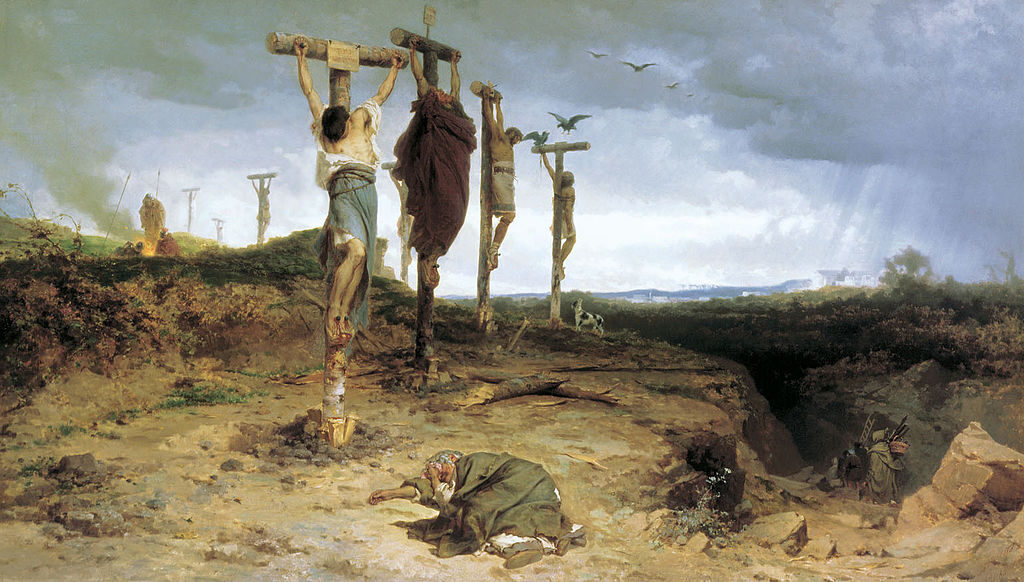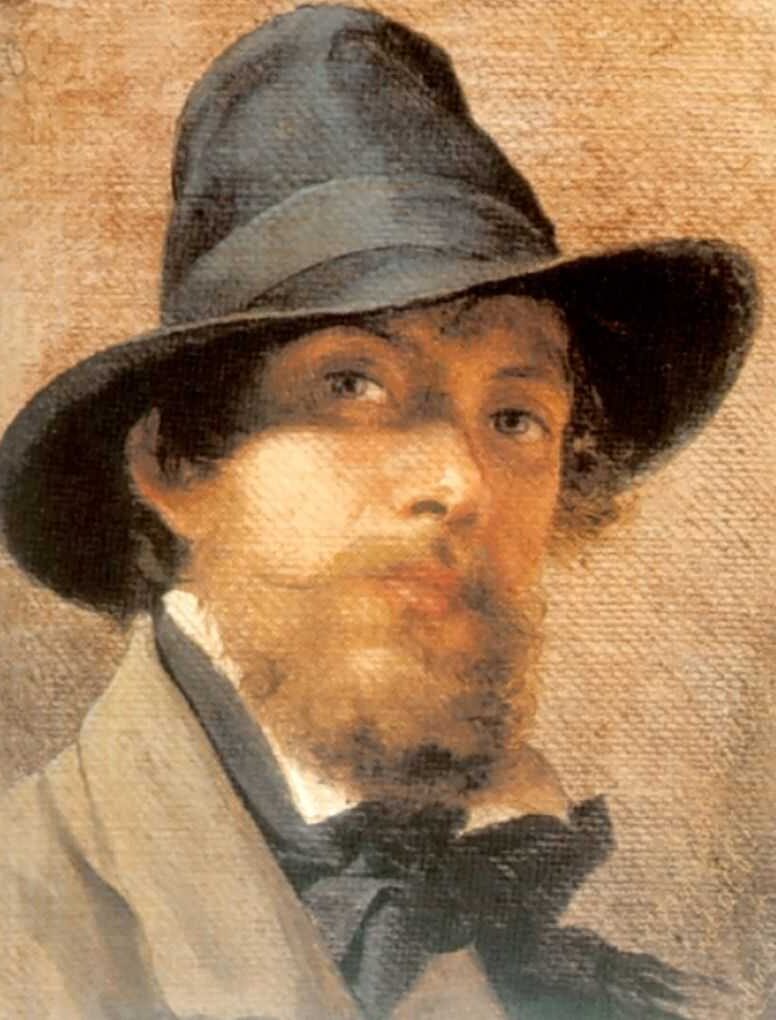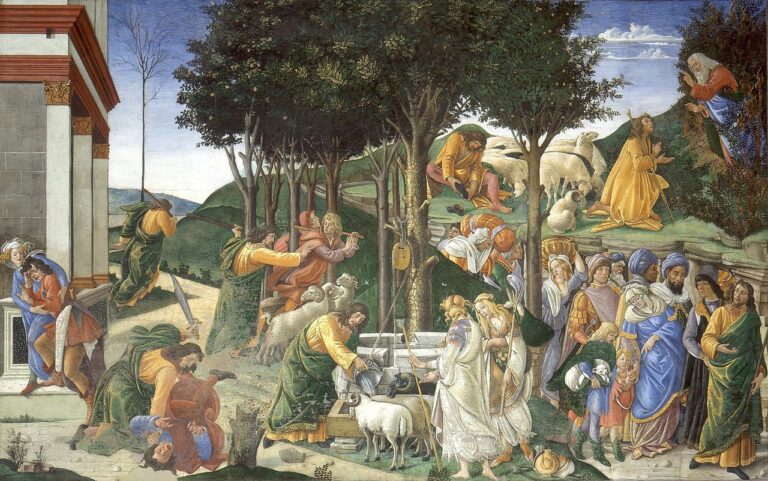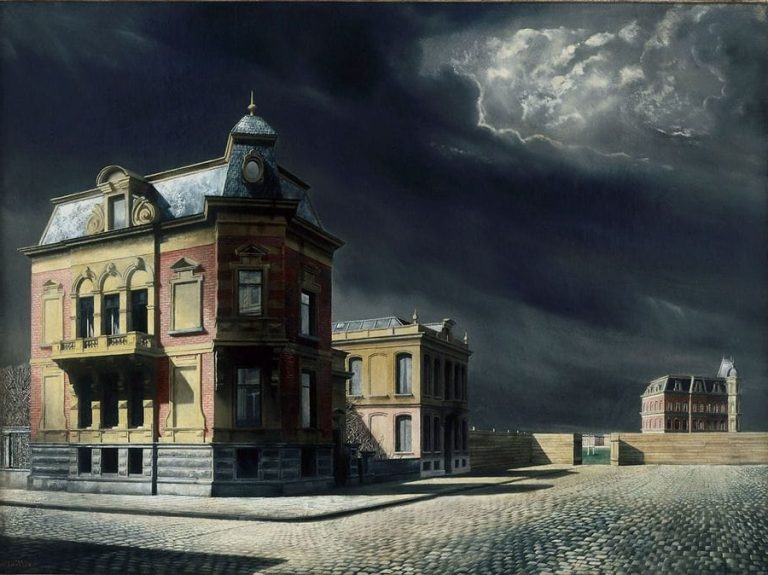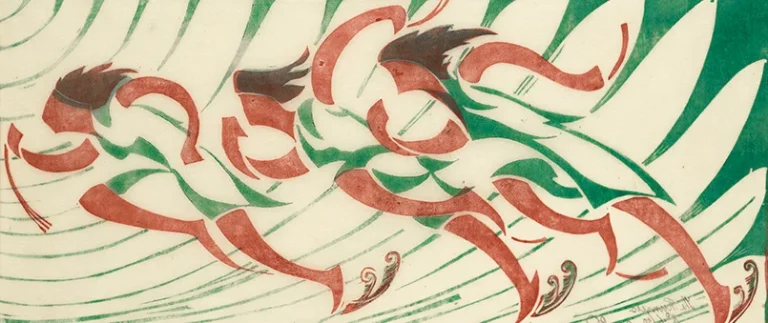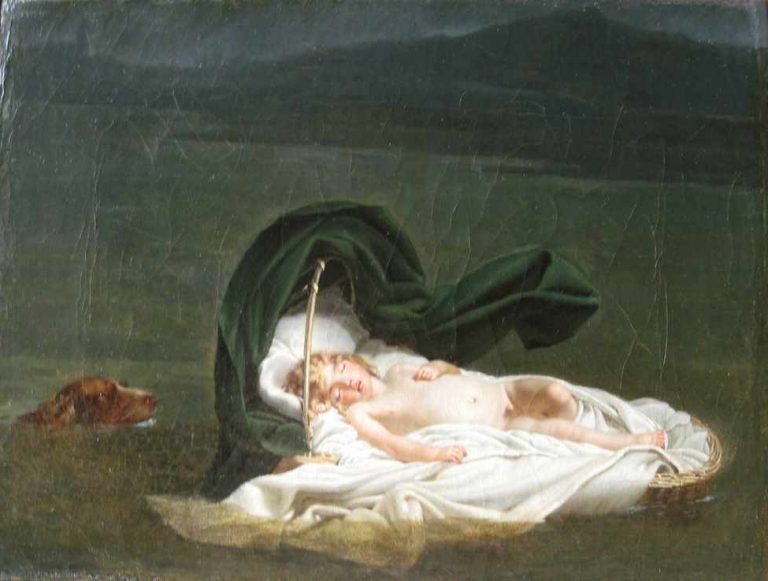Fyodor Bronnikov Painter: Master of Russian Landscape and Historical Art (1827-1902)
Born: 29 September [O.S. 17 September] 1827
Shadrinsk, Perm Governorate, Russian Empire
Death: 14 September 1902, Anticoli Corrado, Rome Province, Italy
Art Movement: Peredvizhniki
Nationalité : Russe
Teacher: Alexey Markov
Institution : Académie impériale des arts
Fyodor Bronnikov Painter: Master of Russian Landscape and Historical Art (1827-1902)
Life and Career of Fyodor Bronnikov
Fyodor Andreyevich Bronnikov (1827-1902) was a prominent Russian artist who spent most of his creative life in Italy. His work spanned historical scenes, genre paintings, and depictions of everyday Italian life, earning him recognition in both Russian and European art circles.
Petite enfance et éducation
Born on September 17, 1827, in Shadrin, a small town in the Perm Governorate of Russia, Bronnikov showed artistic talent from an early age. His family recognized his abilities and supported his creative pursuits.

Pythagoreans Celebrate the Sunrise, 1869 by Fyodor Bronnikov
He moved to St. Petersburg to study at the Imperial Academy of Arts, where he received formal training in classical painting techniques. Bronnikov’s academic education gave him a strong foundation in composition and historical subjects.
In 1854, Bronnikov traveled to Italy on an Academy scholarship. What was intended as a temporary study trip became a permanent relocation. The Italian landscape, culture, and artistic heritage deeply influenced his development as a painter.
Principales œuvres et style artistique
Bronnikov’s artistic style combined academic precision with genuine emotional depth. He worked primarily in oil painting, creating highly detailed compositions with careful attention to historical accuracy.
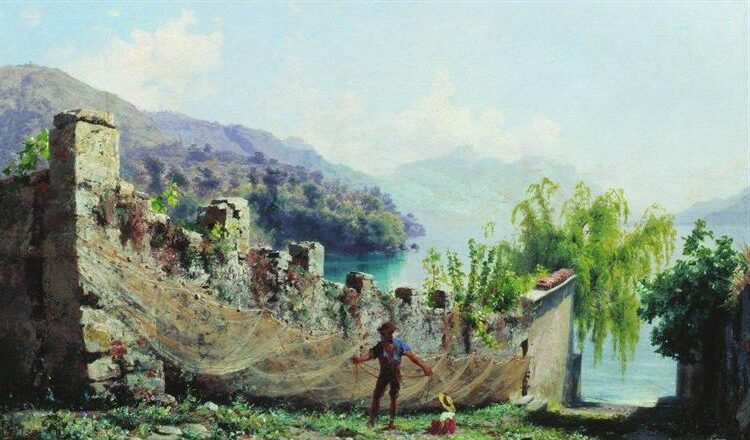
A Fisherman Hanging Fishing Nets, 1875 by Fyodor Bronnikov
His subject matter fell into several categories:
- Historical paintings featuring ancient Greek and Roman themes
- Genre scenes depicting Italian peasant life
- Orientalist works showing his interest in exotic subjects
Some of his notable paintings include scenes of rural Italian life and carefully researched historical compositions. Bronnikov’s technical skill was particularly evident in his portrayal of architectural elements and period costumes.
His color palette tended toward warm Mediterranean tones, reflecting the Italian light that surrounded him during most of his career.
Influence et héritage
Despite living abroad, Bronnikov maintained connections with his homeland. He remained a member of the Russian Academy of Arts and contributed to exhibitions in Russia throughout his career.
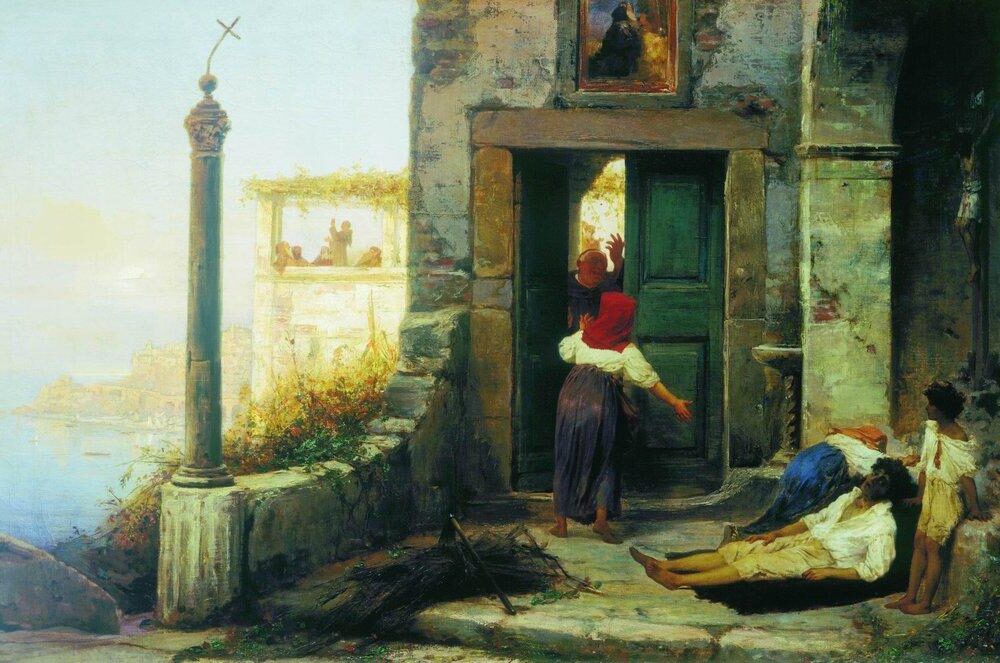
Sick Man at the Walls of a Monastery, 1902 by Fyodor Bronnikov
His work helped bridge Russian and European artistic traditions. By bringing Italian subjects to Russian audiences, he expanded the horizons of Russian fine art during a crucial period of development.
Bronnikov’s paintings can now be found in major museums across Russia, including the Tretyakov Gallery in Moscow and the Russian Museum in St. Petersburg. Art historians recognize him as an important figure in 19th-century Russian painting.
Though less known internationally than some contemporaries, his detailed historical scenes and sensitive portrayals of les gens ordinaires have secured his place in Russian art history.
Artwork Reproduction and Collection
Fyodor Bronnikov’s paintings have become highly sought-after for les amateurs d'art who appreciate 19th-century Russian art. Today’s reproduction technologies make his works accessible to collectors worldwide through various mediums and quality options.
Techniques in Art Reproduction
Modern art reproduction offers several methods to recreate Bronnikov’s masterpieces with remarkable accuracy. Giclée printing stands as the premium choice, using pigment inks on acid-free canvas or fine art paper that resist fading for decades. This technique captures the subtle color variations and brushwork details of Bronnikov’s original paintings.
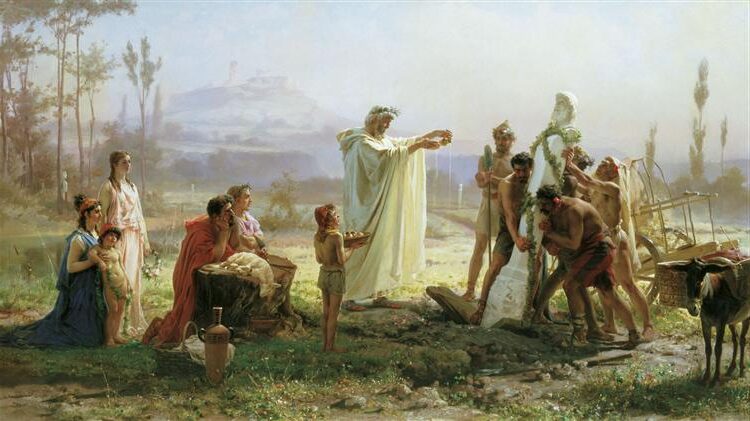
Consecration of the Herm, 1874 by Fyodor Bronnikov
Museum-quality reproductions often feature UV-cured inks that provide additional protection against light damage. These reproductions come in various formats including premium matte canvas, gallery-style prints, and acid-free poster paper options.
For contemporary display preferences, Bronnikov’s works are available as acrylic prints with floating frames or stand-offs that create a modern dimensional effect. Wood prints on Russian birch offer a unique texture that complements his rural scenes and historical paintings.
Acquiring Bronnikov’s Reproductions
Collectors can purchase hand-painted Bronnikov reproductions created by professional studio artists who carefully study his techniques. These custom pieces can be ordered in various sizes to suit specific display needs.
Most reputable art reproduction companies offer secure payment options and money-back guarantees for customer confidence. Many services include free shipping for framed prints and canvas reproductions.
For budget-conscious collectors, digital downloads provide an affordable alternative, allowing personal printing options. Some unique formats include high-gloss jigsaw puzzles, wall clocks, and self-adhesive vinyl murals for creative display options.
Custom framing services help enhance Bronnikov’s work with period-appropriate frames that complement his 19th-century style. Gallery-wrapped canvas options provide a clean, contemporary look that works well in modern interiors.
Bronnikov’s Relevance in Contemporary Culture
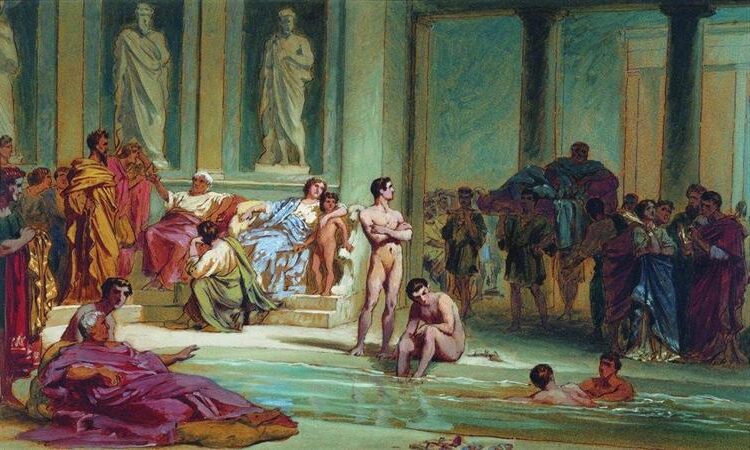
In the Roman Baths, 1865 by Fyodor Bronnikov
Fyodor Bronnikov’s artistic legacy continues to influence modern art appreciation and historical painting studies. His detailed works serve as important cultural documents that bridge 19th century Russian and Italian artistic sensibilities.
Expositions et musées
Bronnikov’s works are prominently featured in several prestigious museums across Russia and Europe. The Tretyakov Gallery in Moscow houses a significant collection of his paintings, including his renowned “Questioner at the Pythia” and “Hymn to the Dawn.”
The Russian Museum in St. Petersburg regularly exhibits his historical scenes et Italian landscapes. In recent years, specialized exhibitions focusing on Russian artists who worked abroad have brought renewed attention to Bronnikov’s contributions.
Digital archives and oil painting reproductions have made his art accessible to wider audiences. The Virtual Russian Museum project now includes high-resolution images of his works, allowing art students and enthusiasts worldwide to study his techniques and compositions.
Modern Interpretations and Inspirations
Contemporary artists continue to draw inspiration from Bronnikov’s meticulous attention to historical detail and his atmospheric portrayal of everyday Italian life. His influence is particularly evident in modern historical painting and neo-classical approaches.

View of Lake Como, 1897 by Fyodor Bronnikov
Bronnikov’s orientalist themes, especially in works like “The Abandoned Bride,” have been reexamined through contemporary critical lenses. Modern scholars analyze how his perspective as a Russian artist influenced his depictions of Mediterranean and Middle Eastern subjects.
Art historians value Bronnikov’s paintings as visual documentation of 19th-century Italian street life and architecture. His works offer authentic glimpses of historical settings that complement written records of the period.
Several contemporary Russian painters have cited Bronnikov’s technical approach to light and shadow as influential in their own practice. His balanced composition techniques remain relevant in academic art education today.
Questions fréquemment posées
Fyodor Andreyevich Bronnikov (1827-1902) was a talented Russian painter who spent most of his career in Italy. His work spans historical scenes, genre paintings, and portraits that reflect both Russian and Italian influences.
What are some of the most significant works of Fyodor Bronnikov?
Bronnikov’s most recognized work is “The Cursed Field” (1878), which depicts the aftermath of a battle with bodies strewn across a field. This painting demonstrates his skill in historical compositions and dramatic narrative.
“Pythagoreans Celebrating the Sunrise” (1869) showcases his interest in ancient history and classical themes. The painting portrays followers of the Greek philosopher in a moment of spiritual ceremony.
His “Italian Shepherds” and various scenes of Italian peasant life represent his genre paintings, which captured everyday life with careful attention to detail and cultural authenticity.
How did Fyodor Bronnikov contribute to Russian fine arts?
Bronnikov bridged Russian and European artistic traditions by bringing Italian influences back to Russian art. He maintained connections to the Russian art community despite living abroad.
As a member of the Imperial Academy of Arts, he helped shape academic standards and training for Russian artists. His detailed historical paintings established precedents for historical accuracy in Russian art.
His works documenting Italian peasant life provided Russian audiences with glimpses of foreign cultures, expanding the subject matter considered worthy of artistic attention.
Can you compare the themes found in Fyodor Bronnikov’s paintings with those of his contemporaries?
While contemporaries like Ivan Aivazovsky focused on seascapes and Vasily Perov centered on social criticism, Bronnikov specialized in historical scenes and Italian genre paintings. His thematic focus was more international.
Unlike the Wanderers movement painters who depicted Russian social issues, Bronnikov often looked to ancient history and foreign settings for inspiration. This created a distinct niche in Russian art of the period.
His work shared the technical precision of academic painters but incorporated more warmth and humanity in his portrayals of common people, especially in his Italian scenes.
What influence did Fyodor Bronnikov have on future generations of artists?
Bronnikov’s meticulous approach to historical research influenced later Russian historical painters. His attention to period details set standards for authenticity in historical art.
His successful career abroad provided a model for Russian artists seeking international recognition. Many followed his path of studying in Europe while maintaining Russian artistic connections.
His genre paintings of Italian life influenced how future Russian artists would approach depicting foreign cultures with respect and careful observation.
How is Fyodor Bronnikov’s artistic style characterized?
Bronnikov’s style combines academic precision with emotional depth. His brushwork is controlled and detailed, reflecting his formal training at the Imperial Academy.
Color plays an important role in his work, with warm Mediterranean light in his Italian scenes contrasting with more somber palettes in his historical compositions.
His figures are portrayed with anatomical accuracy and expressive faces that convey complex emotions. This technical skill is particularly evident in his group compositions where many figures interact.
What were the historical and cultural contexts that shaped Fyodor Bronnikov’s artwork?
Bronnikov’s career coincided with Russia’s growing interest in European culture during the mid-19th century. The Russian aristocracy’s fascination with Italy created a market for his Italian scenes.
The rise of nationalism across Europe influenced his historical paintings. They often featured moments of cultural significance or heroism from the past.
His long residence in Italy during political unification exposed him to dramatic social changes. These events subtly influenced his portrayal of Italian peasant life during a time of national transformation.

